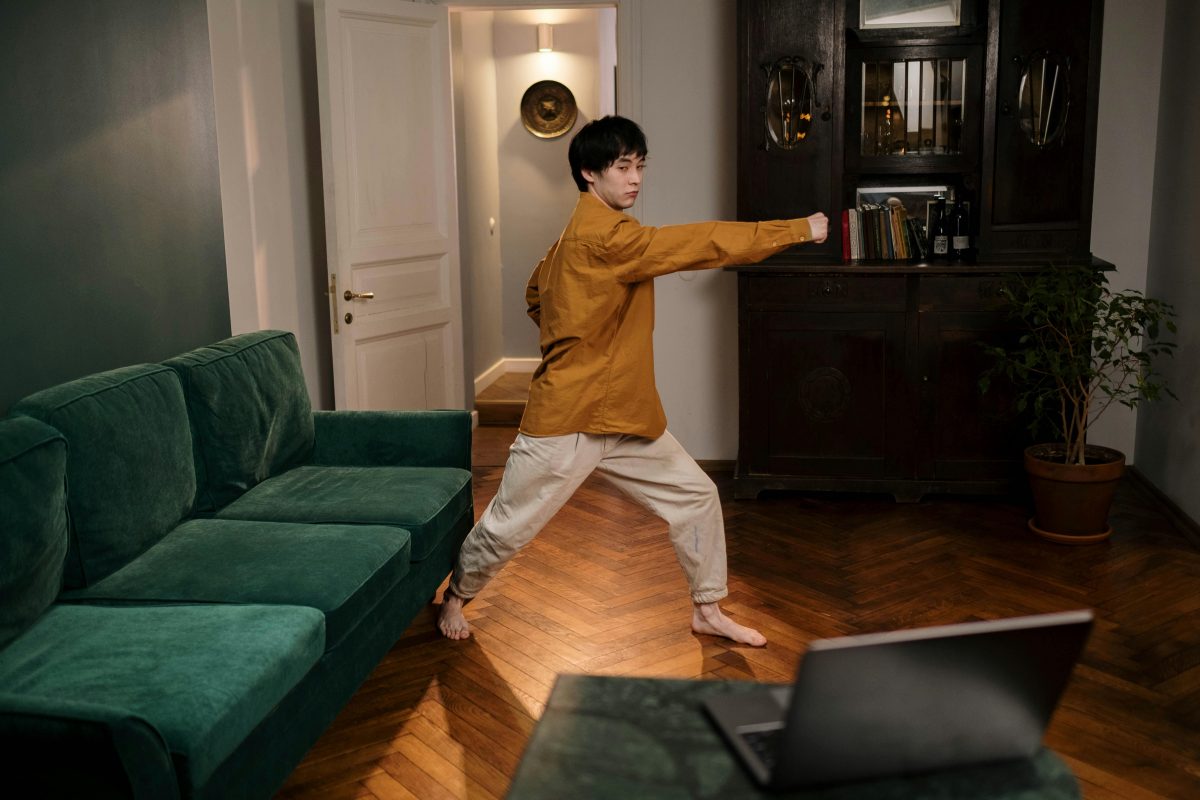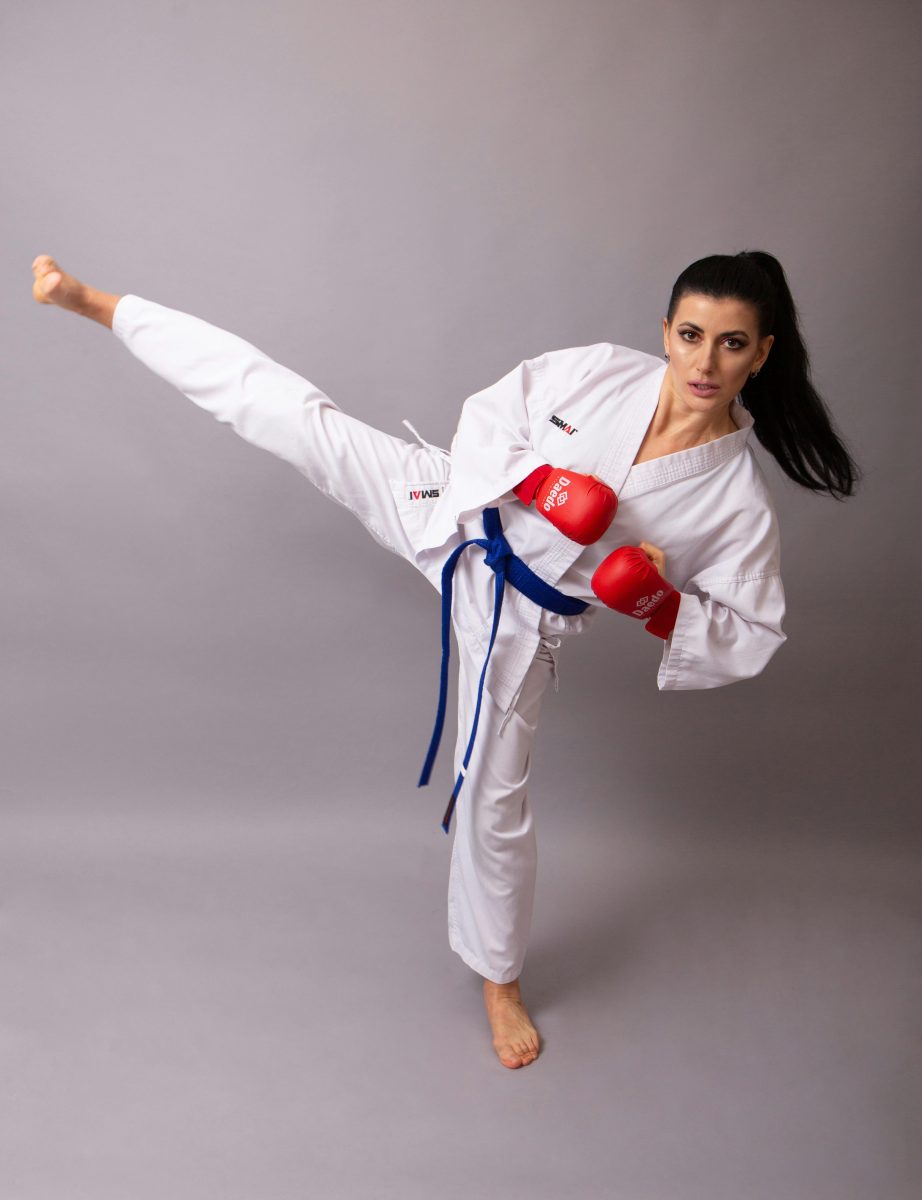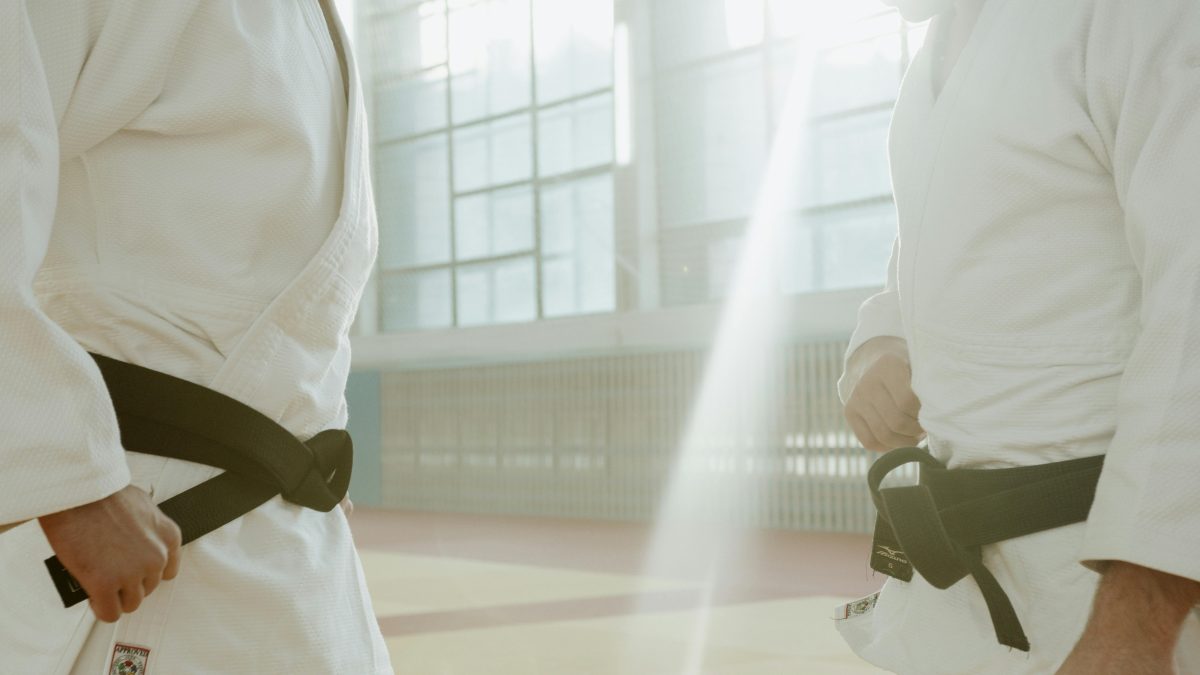Last Updated on: 14th July 2024, 09:30 am
Self-Defense Skills Through Martial Arts Training


Martial arts, with their rich historical tapestry, span centuries and continents, offering more than just combat techniques. They embody discipline, respect, and a deep connection to cultural heritage. In today’s fast-paced world, the relevance of self-defense cannot be overstated. It’s not just about physical prowess; it’s about cultivating a sense of security and confidence in one’s ability to navigate potentially harmful situations.
Integrating martial arts into one’s life enhances self-defense skills in unique ways. It sharpens reflexes, improves situational awareness, and instills a calm mind in the face of danger. Each kick, punch, and block carries the weight of centuries of knowledge, tailored not just for combat but for personal growth and protection. This ancient wisdom, when applied to modern threats, empowers individuals, making them not just survivors but warriors in their own right.
Choosing the Right Martial Art for Self-Defense

When embarking on a journey to enhance self-defense skills through martial arts, the array of styles available can be overwhelming. From the striking techniques of Karate and Muay Thai to the grappling focus of Jiu-Jitsu, each martial art offers a unique approach to self-defense. The key is to find the one that aligns with your personal goals, physical condition, and availability.
- Objectives: Are you looking for a striking art that teaches powerful punches and kicks, or do you prefer the close combat and submission techniques of grappling arts?
- Physical Condition: Some styles are more demanding and may not be suitable for everyone.
- Availability: The availability of classes near you can significantly influence your choice.
Experts often highlight Jiu-Jitsu for its effectiveness in real-world self-defense situations, emphasizing its ability to neutralize threats without relying on brute strength. Muay Thai is praised for its comprehensive striking and clinching techniques, making it a formidable stand-up martial art. Karate, with its focus on discipline and striking precision, offers a balanced approach suitable for all ages.
Ultimately, the most effective martial art for self-defense is the one that resonates with you personally. It should challenge you, fit into your lifestyle, and, most importantly, make you feel empowered and secure. By carefully considering these factors, you can embark on a martial arts journey that not only enhances your physical abilities but also enriches your life.
Self-Defense Skills Through Martial Arts Training
Martial arts training is not just about fighting; it’s a holistic approach to self-defense, encompassing situational awareness, physical conditioning, and mental preparedness. These fundamental skills are crucial for anyone looking to protect themselves in an unpredictable world.
Situational Awareness and Avoidance Techniques
Being aware of your surroundings is the first line of defense. Martial arts teach you to recognize potential threats and avoid dangerous situations whenever possible. This proactive approach minimizes risk and keeps you safe without the need for physical confrontation.
Striking and Blocking Techniques
When avoidance is not an option, striking and blocking become essential. Martial arts such as Karate, Muay Thai, and Taekwondo focus on powerful, precise strikes and blocks. These skills enable you to defend yourself effectively, using your body as a formidable tool against aggression.
Grappling and Ground Defense Strategies
In situations where the conflict goes to the ground, grappling arts like Brazilian Jiu-Jitsu and Judo offer effective defense strategies. These disciplines teach you how to control an opponent, escape holds, and apply submissions, ensuring you’re never at a disadvantage, even on the ground.
Physical Conditioning and Mental Preparedness
Physical fitness is a cornerstone of martial arts, enhancing strength, agility, and endurance. But equally important is mental preparedness. Training fosters resilience, sharpens focus, and builds confidence, empowering you to face challenges calmly and decisively.
Psychological Benefits of Martial Arts Training
Martial arts training transcends physical boundaries, venturing into the realm of mental fortitude and emotional resilience. At its core, it’s a transformative journey that builds confidence and reduces fear. Each stance and technique mastered serves as a testament to one’s progress, fostering a sense of achievement and self-assurance. This newfound confidence is a beacon, illuminating paths once shrouded in apprehension.
- Stress Relief: The rigorous physical exertion acts as a release valve for pent-up stress, channeling it into every punch and kick.
- Mind-Body Harmony: The meditative aspects of martial arts harmonize the mind and body, leading to improved mental health.
- Discipline and Focus: The meticulous attention to form and technique demands unwavering concentration, influencing all facets of life.
Integrating martial arts into one’s life is not merely about learning to defend oneself; it’s about embarking on a journey of self-discovery and growth. The psychological benefits gleaned from this ancient practice are profound, shaping not just warriors, but well-rounded individuals ready to face life’s challenges with grace and resilience.
Practical Application of Martial Arts Training in Real-World Self-Defense

Adapting martial arts techniques for self-defense scenarios is both an art and a science. It requires a nuanced understanding of the principles behind each move and the ability to modify them according to the dynamics of real-world confrontations. This adaptation process is crucial, as the controlled environment of a dojo differs significantly from the unpredictability of a street encounter.
Legal and ethical considerations also play a pivotal role in self-defense situations. Martial artists are taught to use their skills responsibly, understanding that their training gives them an advantage over untrained individuals. The principle of proportionality is emphasized, advocating for the use of force only when absolutely necessary and to the extent required to neutralize a threat. This approach not only ensures personal safety but also aligns with legal standards governing self-defense.
Real-life success stories abound, where martial arts training has proven instrumental in safeguarding individuals from harm. These narratives are not just tales of physical prowess but also of mental fortitude, showcasing how the strategic application of martial arts techniques, combined with a calm and focused mind, can diffuse dangerous situations. From thwarting muggings to preventing assaults, these success stories underscore the practical benefits of martial arts training in real-world self-defense.
Martial arts training transcends the confines of the dojo, equipping individuals with a comprehensive toolkit for personal protection. It fosters a sense of empowerment and confidence, knowing that one possesses the skills to defend oneself if the need arises. This practical application of martial arts in self-defense is a testament to its enduring relevance and value in today’s society.
Training Tips and Safety Measures for Martial Arts Beginners

Embarking on a martial arts journey is an exhilarating step towards self-empowerment. Beginners should approach training with enthusiasm tempered by caution to ensure a safe and rewarding experience. Here are some essential tips and safety measures to consider.
Recommendations for Beginners Starting Their Martial Arts Journey
- Start slow. As a novice, your body needs to adapt to new movements. Select a reputable dojo where instructors prioritize technique and proper form over speed and power. This foundation is critical for your growth and safety.
- Communicate openly with your instructor about any concerns or limitations you may have; this dialogue is key to a tailored and effective training regimen.
Importance of Proper Training and Supervision to Avoid Injuries
- Proper training under experienced supervision is the cornerstone of injury prevention. Skilled instructors guide you through complex techniques, ensuring you perform each movement correctly.
- Patience and persistence are your allies. Remember, mastering martial arts is a marathon, not a sprint.
The Role of Protective Gear and Safe Sparring Practices
- Invest in quality equipment, including headgear, mouthguards, gloves, and pads, to shield yourself during practice.
- Controlled, respectful sparring sessions where both partners focus on technique rather than force, are instrumental in applying skills safely. This approach not only protects you but also fosters a supportive training environment.
By adhering to these guidelines, you set the stage for a fulfilling martial arts journey. Safety measures and proper training are not just recommendations; they are essential practices that safeguard your well-being, allowing you to fully embrace the transformative power of martial arts.
In Closing
Martial arts unlock the power of self-defense. They foster resilience and a sense of achievement. Through disciplined training, individuals gain not just physical strength but mental fortitude, readying them for life’s challenges. This journey of mastery and self-discovery equips one with skills to protect and empower, urging a commitment to continual growth. Embrace martial arts as a path to personal empowerment and safety in an unpredictable world.
Self-Defense Skills Through Martial Arts Training FAQs
Krav Maga and Systema are martial arts developed specifically with self-defense, rather than sport, in mind. Krav Maga incorporates techniques from various martial arts to deal with real-world threats, emphasizing efficiency and quick responses. Systema, originating from Russia, focuses on natural body movements and psychological control to handle confrontations without relying on brute strength.
Martial arts can be an effective tool for stress management, providing a physical outlet for tension and anxiety. The focus on breathing, mindfulness, and physical exertion during training helps to clear the mind and reduce stress levels. Additionally, the discipline and mental focus developed through martial arts practice can improve overall emotional well-being.
Yes, martial arts training can significantly improve your physical fitness. It enhances cardiovascular health, strength, flexibility, and body coordination through dynamic movements and physical conditioning. Regular practice not only builds muscle and endurance but also improves overall body composition.
Look for schools with experienced instructors who have a clear background in self-defense training and a curriculum that emphasizes real-world scenarios. Checking reviews, asking for recommendations from experienced practitioners, and visiting schools to observe classes can help gauge the quality of instruction and the school’s focus on self-defense. Accreditation by recognized martial arts organizations can also be a sign of a reputable school.
Martial arts training positively affects mental health by reducing stress, anxiety, and depression. The discipline and focus required help to improve concentration and self-esteem, providing a sense of accomplishment and confidence. Regular practice also promotes mindfulness and emotional stability, contributing to overall mental well-being.
It typically takes a few months to a year to learn the basics of self-defense in martial arts, but proficiency requires ongoing practice. The time to proficiency can vary widely depending on the martial art, the training frequency, and the individual’s learning pace. Consistent training, at least 2-3 times a week, is crucial for skill retention and improvement.
Martial arts training is highly suitable for children, offering both physical and mental benefits. It teaches discipline, respect, and focus, while also providing a fun and engaging way to develop coordination and physical fitness from an early age. Many martial arts schools offer programs specifically designed for children, focusing on age-appropriate skills and safety.
Self-defense laws vary by location, but generally, the use of martial arts in self-defense is legally acceptable when responding to an immediate threat with proportional force. It’s important to understand the legal concept of “reasonable force” in your jurisdiction, as using excessive force can lead to legal consequences. Training often includes awareness of these legal aspects, teaching practitioners to defuse situations effectively without unnecessary escalation.
The equipment needed varies by martial art but generally includes comfortable workout clothes and a specific uniform or gi for certain styles. Protective gear such as gloves, mouthguards, and headgear might be required for sparring sessions. Some styles may also use training weapons, like wooden knives or sticks, to practice defense techniques.
Brazilian Jiu-Jitsu and Krav Maga are highly recommended for self-defense. Brazilian Jiu-Jitsu focuses on ground fighting and submission holds, allowing a smaller person to defend against a larger adversary by using leverage and technique. Krav Maga, developed for the Israeli military, incorporates techniques from various martial arts and focuses on real-world situations, emphasizing quick, decisive actions to neutralize threats.
Orlando is a all round athlete from Australia, now resident in Germany. His sports of passion of American Football(Offensive line), weight training and indoor rock climbing where he uses his 195cm wing span to his advantage.



